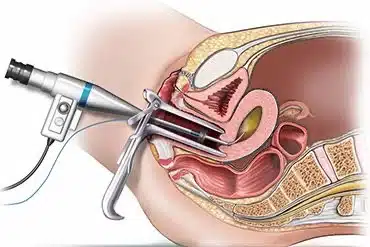What is Hysteroscopy?

How Hysteroscopy is Performed
Hysteroscopy is a diagnostic and therapeutic procedure in women's medicine used to examine the inside of the uterus and the cervical canal. This procedure is performed using a thin, flexible instrument called a hysteroscope, which is equipped with a camera and light source. The device is inserted through the vagina into the uterus, allowing the doctor to directly view the interior and diagnose or treat any issues or conditions.
Applications of Hysteroscopy
-
Diagnosis of Uterine Issues:
- Identifying the cause of abnormal uterine bleeding.
- Examining uterine abnormalities such as polyps and fibroids.
- Diagnosing a septum (internal wall of the uterus) or other structural anomalies.
-
Removal of Foreign Bodies or Anomalies:
- Removing small polyps or fibroids.
- Extracting leftover tissue after a miscarriage or childbirth.
-
Assessment of Fertility Issues:
- Investigating infertility causes such as blocked fallopian tubes.
- Evaluating the uterine lining for any damage or abnormalities that may affect pregnancy.
-
Evaluation of Previous Surgical Outcomes:
- Reviewing the condition of the uterus following prior surgeries, such as fibroid removal or septum repair.
Hysteroscopy: Comprehensive Guide
Conclusion
Hysteroscopy is a safe and effective method for diagnosing and treating many uterine problems, helping physicians provide appropriate treatment plans for their patients. The Narges Infertility Treatment Center offers diagnostic and therapeutic hysteroscopy services using advanced equipment and technologies. Hysteroscopy is performed by experienced and skilled obstetricians and gynecologists.
